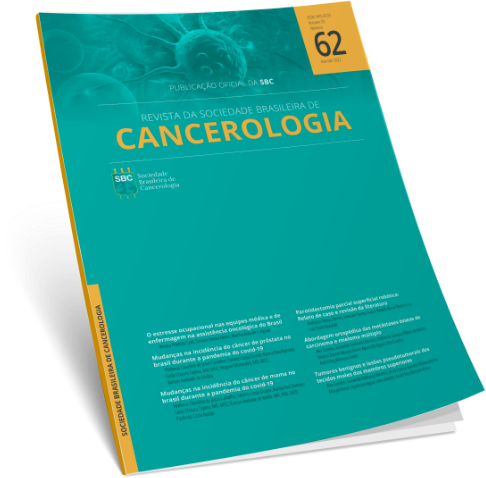Matheus do Nascimento Santo
Lucas Santana Bahiense Filho
Maria Polliana Braz Silva Santana
ABSTRACT
Introduction: Malignant neoplasm of the prostate represents an important cause of morbidity and mortality in men worldwide. Risk factors include advanced age, family history, ethnic origin, diet and physical inactivity. Despite the reduction in the mortality rate over the last few decades, this neoplasm remains a significant public health challenge. Treatment involves surgery, radiotherapy, chemotherapy and targeted therapies, providing better results and quality of life for patients.
Objectives: To describe the clinical and epidemiological characteristics of malignant prostate neoplasia between 2013 and 2022 in Salvador-BA.
Methods: Descriptive ecological study carried out using data collected by the Brazilian Oncology Panel of DATASUS. The numbers of diagnoses for malignant neoplasia of the prostate in Salvador between 2013 and 2022 were analyzed.
Variables analyzed: municipality of residence; acts; age group; staging; therapeutic modality.
Results: In the period analyzed, 5,146 cases were reported in Salvador. With a peak in 2019, of 932 cases (18.11%), and a lower number in 2015 and 2016, both with 346 cases (6.72% each), as shown in Graph 1. About the patients: the most affected age group was between 65 and 69 years old, with 24.27%. In relation to the number of diagnosed cases, there was a 24-fold increase between 45 and 65 years old (Graph 2). In staging, the most prevalent grade was 3, with 22.28%. The most adopted therapeutic modality was chemotherapy (36.78%), followed by radiotherapy (20.40%).
Conclusion: Malignant prostate neoplasia is a public health challenge in Salvador due to prejudice and resistance towards screening tests. This leads to late diagnoses in advanced stages and compromises treatment. It is crucial to implement prevention and awareness strategies to improve men’s health in the region, educating about the importance of exams and demystifying prejudices and facilitating early diagnosis.
Keywords: Neoplasms; Prostate; Early Diagnosis; Men’s Health; Morbidity and mortality indicators.

